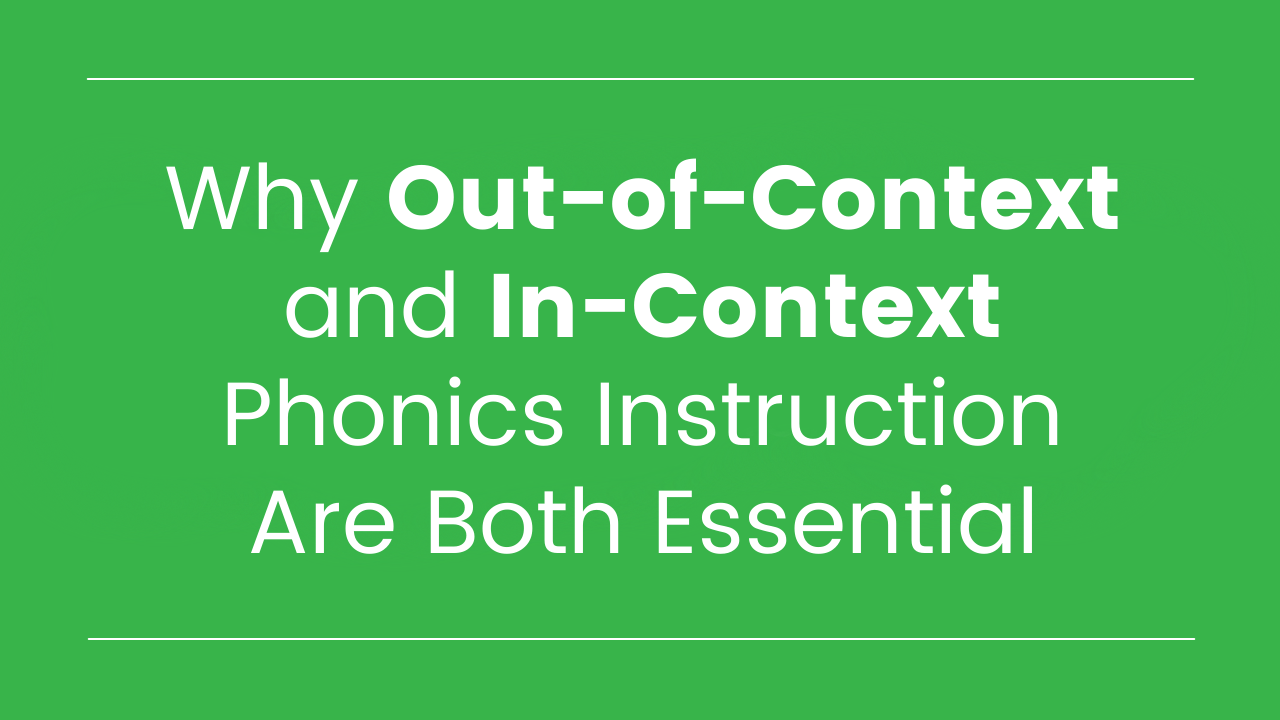
Why Out-of-Context and In-Context Phonics Instruction Are Both Essential
Did you know that there's no single correct way to teach phonics? Research does show that explicit, systematic phonics instruction is most effective, and it also provides a few other principles we should follow. One of those principles is to provide both out-of-context and in-context phonics instruction.
What is Out-Of-Context Phonics Instruction?
Out-of-context phonics instruction involves focused work with patterns (like “sh,” “oa,” etc.) and individual words.
For example, if students are working on the “sh” digraph, you might have them read a list of words that contain "sh." You might have students use magnetic letters to build words with “sh," or write "sh" words on whiteboards.
Out-of-context phonics instruction helps students solidify their understanding of the relationships between letters and the sounds they make. It also helps students learn to decode words effectively, and it helps build students' sight word knowledge.
What is In-Context Phonics Instruction?
In-context phonics instruction involves working on phonics skills as part of a text that you and/or the students are reading or writing. Going along with the "sh" example, after you have students read and build individual words with “sh,” you might ask them to read a decodable text that contains many examples of “sh” words. This is in-context phonics instruction because students are no longer working only with individual words; they are reading them in the context of a larger text.
During writing time, in-context phonics instruction might mean that as you’re modeling writing, you do a “think-aloud” about how you’re applying your knowledge of “sh” to spell a couple of the words. Later, you might have students re-read their own writing pieces to look for examples of the “sh” digraph and any other digraphs that they used to spell words.

Why Is It Important To Implement Both Types of Phonics Instruction?
When students are learning about patterns and how to put sounds together, they need to practice working with individual words. If we teach a new skill - short a, for example - and then immediately ask students to read an entire decodable text with short a, many students would struggle. Reading and spelling individual words serves as a "bridge" between learning a phonics skill and using it in the context of reading and writing.
However, the whole point of learning phonics is to help students read and write. Therefore, it's important that students have opportunities to apply their skills to actual reading and writing, too. While some students may be ready for in-context practice the same day they are introduced to a new skill, many students will need multiple opportunities for out-of-context practice before making this transition. Even after you transition students to in-context practice, you'll still want to have them working with individual words to help build fluency with the skill (and work on spelling).
If you'd like to see what a week of out-of-context and in-context phonics instruction might look like, download a free week of our phonics program, From Sounds to Spelling (R), at this link. Happy teaching!





